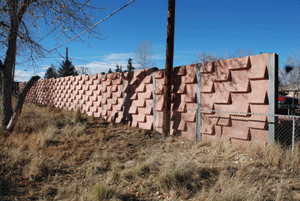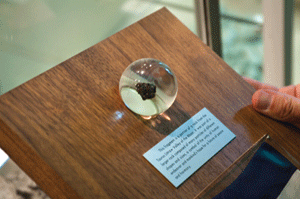Colorado School of Mines’ new 155-teraflop supercomputer, dubbed ‘BlueM,’ will allow researchers to run large simulations that support the university’s core research areas while developing innovative algorithms to make the best use of a powerful hybrid system.
Although BlueM will be housed at the Boulder-based National Center for Atmospheric Research (NCAR) as part of a new collaboration, it will be part of the Mines network, and faculty will have broad access. “Most large-scale, high-performance computing systems available for academic research are available under the NSF XSEDE [National Science Foundation Extreme Science and Engineering Discovery Environment] program,” says Timothy Kaiser, director of research and high-performance computing at Mines and the director of Golden Energy Computing Organization. “Machines might be on a college campus, but the home institution only has access to about 7 to 10 percent of the capacity. The rest is used by general NSF researchers. Because BlueM belongs to Mines, we get to decide how it’s used.”
Once the switch is thrown on BlueM, there’s a long and diverse list of projects waiting to be run. Subjects to be researched include biomass conversion and the stability of biomass fuels, fuel cells, fundamental battery technology, hydrate nucleation, wind energy, hydropower, carbon sequestration, fission reactor design, environmental impact of pine beetle infestations (see story, p. 12), atmospheric scattering affecting climate, interactions between surface and groundwater, seismic modeling, solar cells, and nanostructures and nanowires in solar cells.
While Mines has outgrown BlueM’s 23-teraflop predecessor, RA, the supercomputer was extremely successful at promoting computational research at Mines, creating an appetite that exceeded its own capacity. Able to operate at six times the speed, BlueM performs 155 trillion operations per second. This allows researchers to run higher-fidelity simulations than in the past, and, thanks to a first-of-its-kind, dual-architecture system that combines the IBM BlueGene Q and iDataplex platforms, they are likely to break new ground in terms of algorithm development. The two computer partitions are optimized for different calculations, so Mines and NCAR will conduct research on ways to combine them to perform multi-physics modeling, mostly focused on climate and the earth.
BlueM technical specs
- Requires only 85 kW of electrical power
- Occupies a 20-by-8-foot footprint
- Comprises five racks (three compute racks, a management rack and a file system rack)
- Includes two partitions: MC2 (pronounced ‘Energy’) runs on an IBM Blue GeneQ and AuN (pronounced ‘Golden’) is based on the IBM iDataplex platform
- 155 teraflops (more than 104 in MC2 and 50 in AuN)
- 17.4 terabytes of memory, 10,496 cores in 656 nodes and 480 terabytes of disk
- Water-cooled





